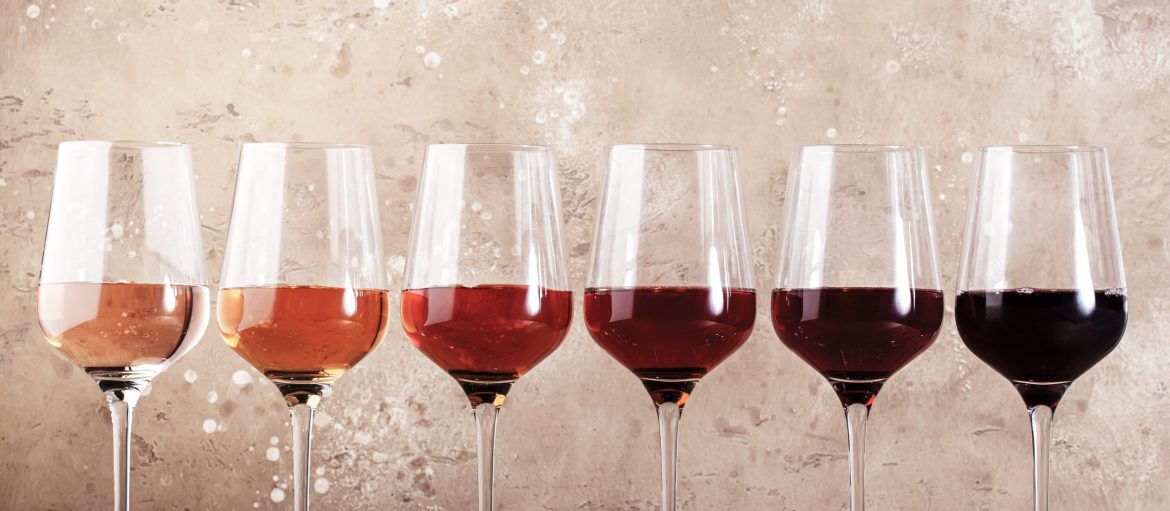The technology of making rose wine is almost identical to that for red wines, but the time when the wort takes over the coloring substances from the skins of the grapes is much reduced.
Some methods of obtaining rose wine:
- The method of short-term maceration,, from 6 to 36 hours. The less the grapes stay in contact with the must, the lighter the color of the future rose wine will be. If the contact time with the skins of the grapes will be more than 20 hours or the variety is one with a higher coloring intensity, the pink of the wine will be more intense, more vibrant, stronger. Another variant of maceration on berries to obtain rose wines is the one used in the case of varieties with gray or pink grapes, aromatic or not (Pinot gris, Babeasca gray, Traminer pink, Traminer aromatic / Gewurztraminer). Although classic for white wines, these varieties, in recent years, winemakers have found a new vocation, that of niche roses. According to a resolution of the OIV, they would fall into the category of white wines with maceration, along with orange wines, but their legal classification is for red wines.
- The method of direct pressing of black grapes is used when the must will be the basis for sparkling rose or when the harvest is compromised by hail, drosophile attack, early autumn frost, gray rot or the capitalization of the grapes from the norming of production, if this is done when the black grapes are in parga.
- The bleeding or saignee method, consists in extracting, during maceration, a fraction of up to 10% of the must, which will ferment separately, resulting in a fruity and colored rose wine weaker or more intensely, depending on the variety from which it comes. The mustache from which the rose fraction was removed will then give a more intensely colored red wine, richer in extract, due to the concentration of compounds resulting from maceration.
- The method of mixing white and black grapesis used technologically (when the mixture is desired and the proportions are well determined) or accidentally (when they are picked together with the white grapes, the impurity vines with colored grapes – the classic example is Pinot gris for white wines, with Pinot noirwhich results in light-colored rose wines, of “blush” type (tamed), so-called “stained” wines. Maceration for blush-type rose wines lasts 16 to 36 hours, as it is desired to be weaker or more intensely colored. To obtain a rose blush wine, the share of black grapes in the mixture should not exceed 30%. In France, in the north of the Rhone, in Cote Rotie, 20% overripe grapes of the Viognier variety are mixed with 80% grapes of the Syrah variety, without resulting in a rose wine. Viognier brings over the spicy Syrah notes of ripe apricots and peyrsics and will balance its acidity. Although the European legislation provides for a maximum of 15% of another variety, without being mentioned on the label, by a derogation for this remarkable wine, the white variety is not listed on the label. In the New World the mixture of the two varieties is legislated, so that in South Australia (Barossa Valley sI McLaren Valle) and in Victoria (Yarra Valley) this type of Shiraz is produced in considerable quantities.
- The method of inseminating white must with yeasts resulting during the fermentation of red wine, generates a rose wine with very light shades. It is not a method too often used in wine cellars that produce wines that are guaranteed traceability, origin and authenticity, but, being a practice in rural households, it was necessary to be eaten.

Rose wines do not have a vocation of collection, they do not lend themselves to ageing. They are recommended to be consumed fresh, within three years of bottling, because they do not enhance their qualities in the bottle. All their beauty fades over time. Roses are bottled fresh, ready for consumption and that’s why closing bottles with screw-cap is suitable, all the more so as they can be easily unfolded even at a picnic or on the beach, when you do not always have a corkscrew at hand.
The versatility of rose wines is so extensive that from prosciutto or Mediterranean food, to the American juicy burger, it can be associated with almost any dish (salty, slightly spicy, spicy, sweet). Rosado wine, the Spaniard, which is more colorful and richer in flavors, can accompany dishes with a lot of meat. Rose sparkling wines, along with chocolate or slices of fruit, can turn any ordinary meeting into a small celebration.
In our country, on May 14th, the Rose Wine Contest is held annually, under the careful guidance of the Winelover Romania Organization, bringing to the attention of consumers the peaks of the Romanian production of this beloved type of wine.
The law says: according to article 33, paragraph (2), punctually (iii), of GD 512/2016 on the Implementing Rules of the Law on Vine and Wine 164/2015: “within the framework of this article, rosé wine is considered to be red wine”.



